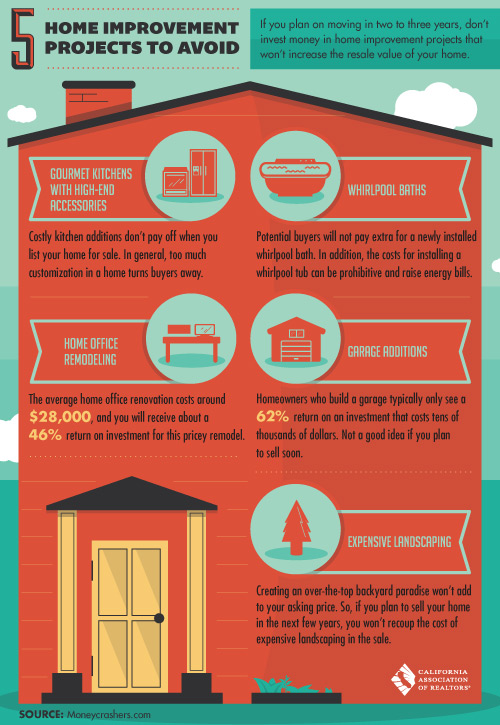
We’ve all heard about how “bad” the real estate market is. But what’s bad for sellers can be good for buyers, and these days, savvy buyers are out in spades trying to take advantage of the buyer’s market. Here are 13 thing you can do to help sell your house.
1. Audit your agent’s online marketing. 92% of homebuyers start their house hunt online, and they will never even get in the car to come see your home if the online listings aren’t compelling. In real estate, compelling means pictures! A study by Trulia.comshows that listings with more than 6 pictures are twice as likely to be viewed by buyers as listings that had fewer than 6 pictures.
2. Post a video love letter about your home on YouTube. Get a $125 FlipCam and walk through your home AND your neighborhood, telling prospective buyers about the best bits – what your family loved about the house, your favorite bakery or coffee shop that you frequented on Saturday mornings, etc. Buyers like to know that a home was well-loved, and it helps them visualize living a great life there, too.
3. Let your neighbors choose their neighbors. If you belong to neighborhood online message boards or email lists, send a link to your home’s online listing to your neighbors. Also, invite your neighbors to your open house – turn it into a block party. That creates opportunities for your neighbors to sell the neighborhood to prospective buyers and for your neighbors to invite house hunters they know who have always wanted to live in the area.
4. Facebook your home’s listing. Facebook is the great connector of people these days. If you have 200 friends and they each have 200 friends, imagine the power of that network in getting the word out about your house!
5. Leave some good stuff behind. We’ve all heard about closing cost credits, but those are almost so common now that buyers expect them – they don’t really distinguish your house from any of the other homes on the market anymore. What can distinguish your home is leaving behind some of your personal property, ideally items that are above and beyond what the average homebuyer in your home’s price range would be able to afford. That may be stainless steel kitchen appliances or a plasma screen TV, or it might be a golf cart if your home is on a golf course.
6. Beat the competition with condition. In many markets, much of the competition is low-priced foreclosures and short sales. As an individual homeowner, the way you can compete is on condition. Consider having a termite inspection in advance of listing your home, and get as many of the repairs done as you can – it’s a major selling point to be able to advertise a very low or non-existent pest repair bill. Also, make sure that the little nicks and scratches, doorknobs that don’t work, and wonky handles are all repaired before you start showing your home.
Plus: 5 Easy Improvements to Hook a Buyer For Your Home
7. Stage the exterior of your home too. Stage the exterior with fresh paint, immaculate landscaping and even outdoor furniture to set up a Sunday brunch on the deck vignette. Buyers often fantasize about enjoying their backyards by entertaining and spending time outside.
8. Access is essential. Homes that don’t get shown don’t get sold. And many foreclosures and short sale listings are vacant, so they can be shown anytime. Don’t make it difficult for agents to get their clients into your home – if they have to make appointments way in advance, or can only show it during a very restrictive time frame, they will likely just cross your place off the list and go show the places that are easy to get into.
9. Get real about pricing. Today’s buyers are very educated about the comparable sales in the area, which heavily influence the fair market value of your home. And they also know that they’re in the driver’s seat. To make your home competitive, have your broker or agent get you the sales prices of the three most similar homes that have sold in your area in the last month or so, then try to go 10-15% below that when you set your home’s list price. The homes that look like a great deal are the ones that get the most visits from buyers and, on occasion even receive multiple offers. (Bidding wars do still exist!)
10. Get clued into your competition. Work with your broker or agent to get educated about the price, type of sale and condition of the other homes your home is up against. Attend some open houses in your area and do a real estate reality check: know that buyers that see your home will see those homes, too – make sure the real-time comparison will come out in your home’s favor by ensuring the condition of your home is up to par.
11. De-personalize. Do this – pretend you’re moving out. Take all the things that make your home “your” personal sanctuary (e.g., family photos, religious décor and kitschy memorabilia), pack them up and put them in storage. Buyers want to visualize your house being their house – and it’s difficult for them to do that with all your personal items marking the territory as yours.
12. De-clutter. Keep the faux-moving in motion. Pack up all your tchotchkes, anything that is sitting on top of a countertop, table or other flat surfaces. Anything that you haven’t used in at least a year? That goes, too. Give away what you can, throw away as much as possible of what remains, and then pack the rest to get it ready to move.
13. Listen to your agent. If you find an experienced real estate agent to list your home, who has a successful track record of selling homes in your area, listen to their recommendations! Find an agent you trust and follow their advice as often as you can.
















